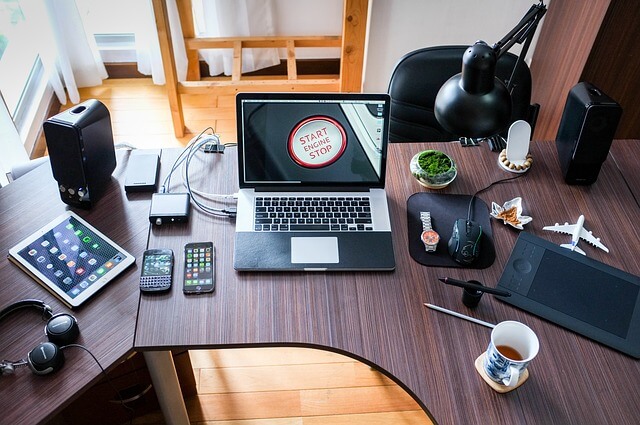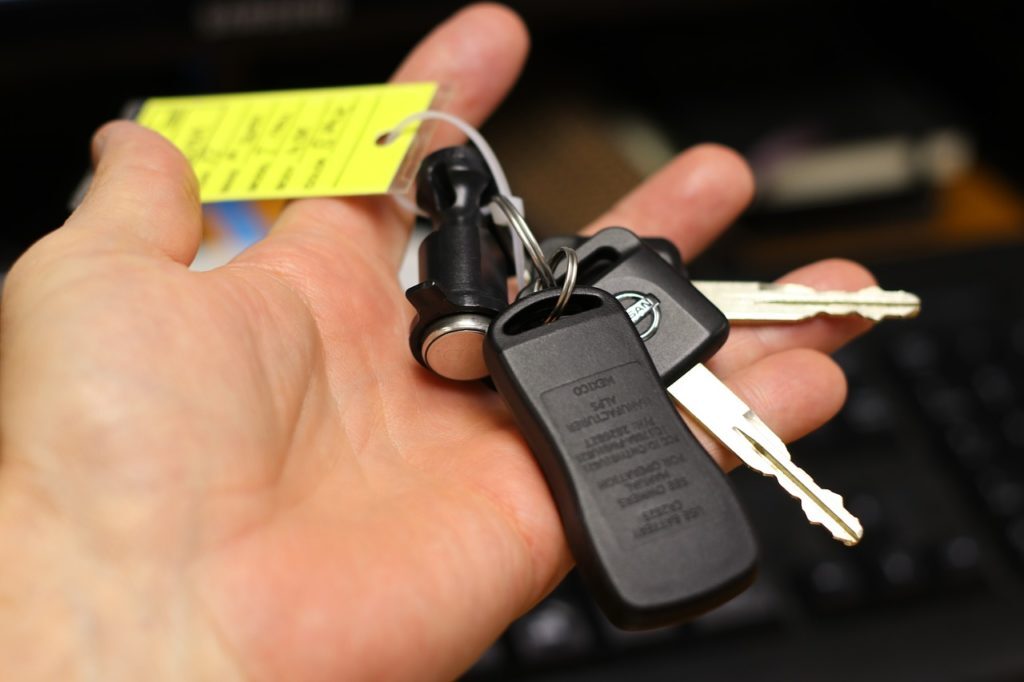How Car Dealers Can Survive During The Coronavirus Outbreak
The coronavirus outbreak has already had a drastic impact on our entire way of life. By nearly all accounts, things are likely to get worse before they get better. This extends to a crucial part of the global economy: Car manufacturing and car buying. Many buyers are likely to drop out of the market completely or put their purchases on hold. And this means the dealers who want to get through this mess and save their businesses may have to make changes both short-term and permanent—to close deals.
Wall Street Journal reports some dealers are starting to take a serious look at how they handle customers and transactions at a time where people are being asked (or ordered) not to go out in public or gather in large groups. While used car startups like Carvana and Vroom already offer home delivery and online transactions, they also price their cars on the upper end of the spectrum, so that convenience has a cost (similar to CarMax). And none offer new-car sales.
It’s no secret that most dealers are stuck in the past, married to the retrograde model of relying on people to physically show up at the dealership and haggle for hours until papers are signed. Protected by strong franchise laws, car dealers lag behind other retail sectors in embracing online selling. You still can’t buy a car on the internet the way you’d buy a phone, even though manufacturers all offer spiffy “Build Your Own” model configurators that have the veneer of a one-click order system.
But with the social distancing precautions spreading around the country, lagging behind the virus, I can’t imagine anyone wanting to spend hours at a dealership for at least the next couple months. So dealers need to act, now.
indicates we could see as much as 3 million fewer new vehicles sold this year—not quite Great Recession levels of bad, but much lower than anticipated. And regardless, any close comparison to the last economic crisis is sure to spook everyone in the industry, which got absolutely hammered a decade ago.

Must-Have Items to Set Up an Office for Used Car Dealership
Setting up your office for a used car dealership is important. Probably, it is one of the most essential steps to establish your business. Because an office is a place where you finalize sales and operate your business. So, you need to make your dealership office professional, inviting, clean, and pleasant environment for your customers.
In one sense, your office is the face of your dealership. If you have a professional, clean, and organized office, your customers may develop a positive impression towards you and your business. They may like how you run your business. As a result, they may be interested in doing business with you.
An actual office building
Most states will not issue you a dealer license if you do not have a physical location and an office. if you are planning to move to an already established building, make sure that the place is in a convenient location and gets a good amount of traffic.
Several chairs
It is quite to unconvertable to make your customers wait on their feet. Buy several chairs because most customers come with a family so you need to heave comfortable places for them to sit.
Office table
Doing paperwork without an office table is almost impossible. Also, you need a table to put your computer and printers. If you can’t afford them, just get the used ones from Craigslist. I am sure there are some people who sell used office furniture in your area.

How to buy a used car
You’re in the market for a used car, but you don’t want to buy a lemon. You’re wondering if it’s possible to spend less than you would on a new car, and still get something safe and reliable. It is, but be prepared to do some homework.
Before you buy a used car
Don’t rush, take your time and do your research into the different makes and models, and consider the following:
Your budget. Work out how much you can afford to spend. Red Book will guide you on the value of the car or cars you’re considering according to their year and model.
Your needs. What will you use the car for? If you do most of your driving in the city, a four-wheel drive is hardly necessary.
Safety. Check the used car safety ratings that are based on real-life accidents.
Security. How easy is it to steal or break into the car? What security features is the car equipped with? Check the National Motor Vehicle Theft Reduction Council car security scores.
Insurance costs. Thesewill vary from model to model. Once you’ve narrowed down your options get some quotes.
Environment. Check the car’s fuel consumption and emissions rating. The Green Vehicle Guide can help you here.
Dealer, auction or private sale. Decide where and how you want to buy the car. See what we have to say about these options further down in this article.
Regulations. Check your state or territory’s regulations around buying and selling used cars, including how to make sure there’s no money owing on the car. We have more info on this later in this article.
Out shopping
Inspect the car using the checklist below.
If you’re not comfortable inspecting the car yourself you can organise an independent expert inspection through your state’s motoring organisation. If you buy at auction, though, this usually isn’t possible.
If you find a car that fits your criteria, check that it is debt-free. If you buy the car from a dealer, they’re legally obliged to guarantee that the car’s debt-free. For private sales you can check the national Personal Property Securities Register (PPSR) – this has replaced numerous existing asset registers across Australia, including the Register of Encumbered Vehicles or REVS. Have the vehicle identification number (VIN) or chassis number ready. There is a fee of $3.40 per search payable by Visa, MasterCard or American Express.
Don’t sign until you’re completely happy with the car and its cost.
Ask questions about the vehicle’s history – how many owners has the vehicle had previously? Has it been involved in any crashes? What’s the mileage? How much does it cost to fill the tank? Is the vehicle currently registered and insured? What safety features does it have?
After the sale
Arrange insurance once you’ve bought the car and before you drive it anywhere.
Transfer the registration to your name. You usually have to do this within a few days of buying the car.
Car Salesman Confidential: How To Buy A Used Car
In recent years, with the transaction price of the average new car climbing past $30,000, and the sluggish economy, more and more people are electing to keep their cars a little longer, or buy used. So the question is, how do you keep from getting stuck with a bad used car? Here are my suggestions, as a ten year veteran of car sales
Establish A Relationship With A Salesperson
Any time you buy from a person you’ve never met, whether he’s a salesman for a dealership or some guy on eBay, it’s a bit of a gamble. The seller may be a straight shooter, and the car he’s selling may be perfectly fine. Or he may be a con artist and the car may have serious problems with it. In my opinion, a good strategy is to find a salesperson you trust — maybe the man or woman you bought your last new car from — and work through them. When it comes time to buy something used, call them up and tell them what you’re looking for. If he’s smart, your salesman will steer you to a car you’ll be happy with, if for no other reason than he wants to sell you more cars in the future
Buy From A Large Dealership With A Good Reputation
I’m not knocking small “Mom & Pop” dealerships, because I have many friends who work at places like this and there’s nothing wrong with the cars they sell. But I think you have a slightly better chance of finding a good used car at a large, well-established dealership. There are two reasons. First, large dealerships have service departments, whereas your local “dirt lot” probably does not. Chances are good that any car you find at a large dealership has at least gone through a basic Safety Inspection to make sure the tires are good, the brakes work, and nothing is wrong with the steering. Most dealerships will also check the fluids and change the oil. With a small lot you just have to take the seller’s word for it that the car is mechanically sound, or arrange to have your own mechanic inspect it.
A Word About Rental Cars.
Many times, dealerships will supplement their used car inventory with vehicles from rental car companies. The reason is simple: they need the inventory. A dealership can’t just sit around and wait for customers to trade in what’s popular, so they go out and buy desirable vehicles from rental companies, or at auction. A lot of people are put off by this, but they shouldn’t be. If a car is in good condition it shouldn’t matter who the previous owner was. (In fact, you may even have a better chance that the vehicle was properly maintained because most rental companies perform regular maintenance.) Rentals will typically have a little higher mileage on them than comparable privately owned cars, but that also means they’re priced lower. I have sold many a used car that came from a rental fleet and had no complaints yet.
Buy A Certified Used Car
If you’ve been out cruising dealerships lately you may have noticed some of the cars have stickers on them saying things like “Certified” or “Certified Pre-Owned.” What this means is that the car has gone through an inspection process, been serviced and, if necessary, repaired, and is being sold with an extended warranty.
Car Care Tips
Factors to Consider When Buying a Used Car
This also means that you’re most likely about to dive into hours of research, comparing various makes and models and wondering which dealers you can trust. There tends to be some unknowns associated with used cars – but there doesn’t have to be. You’ll want to learn as much as possible before signing on the dotted line.
Budget
Before you set out to find the car of your dreams, define a clear budget and stick to it. This can be difficult as you discover the plethora of options and add-ons that exist in the automotive industry, but sticking to your budget will help you quickly narrow your search.
Vehicle History
If you scan the interior and exterior of the vehicle and everything looks spotless, don’t be so sure. Even though everything might look right on the outside, the vehicle may have had a rough past. Websites like CARFAX can provide you with robust history reports detailing prior damage, odometer readings, and title information.
Pre-Purchase Inspection
This is one of the most important steps to take when buying a used car. Ensure that the pre-owned vehicle you’re interested in is what it claims to be with our pre-purchase car inspection service.
Reputation
It’s not hard to find reviews and reputation reports for auto manufacturers and their various makes and models. Websites like Kelley Blue Book provide an abundance of useful resources, from car reviews and manufacturer awards to valuation tools and local dealer inventories.